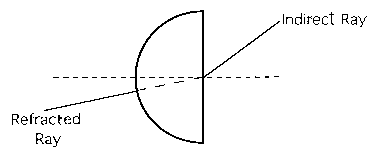 |
 |
|
|
|
|
Grade 9-12 Performance Task Description:One of the tests that scientists can use to identify a substance is to measure its index of refraction through the Snell's Law equation. In this activity, students, as scientists in the Consumer Protection Agency, will determine whether the index of refraction of a sample of Corn Syrup meets Federal standards. This task assesses students' abilities to develop procedures for investigation, plan for recording and organizing observations and data, make quality observations and collect quality data, create a graph appropriate to the data trend, calculate slope using trigonometric principles, and make conclusions consistent with scientific principles. This task is designed to take students approximately 80 minutes to complete - 30 minutes for Part A and 50 minutes for Part B. Overall Task Content Area:
Specific Knowledge Areas:
Performance Expectations:
National Science Eduation Standards:8 B PS 3: Transfer of energy: Grades 5-8 12 A SI 1: Abilities necessary to do scientific
inquiry: Grades 9-12 (Use the "hot" link on the PALS home page to check the full text of related National Science Education Standards, if desired.) National Council of Teachers of Mathematics:NO3: Compute fluently and make reasonable
estimates: AL1: Understand patterns, relations and
functions: AL2: Recognize and analyze mathematical
situations and structures using algebraic symbols: DAP1: Formulate questions that can be
addressed with data and collect, organize, and display relevant
data to answer them: MEAS2: Apply appropriate techniques, tools,
and formulas to determine measurements: PS4: Monitor and reflect on the process
of mathematical problem solving: RP3: Develop and evaluate mathematical
arguments and proofs: CNX2: Understand how mathematical ideas
interconnect and build on one another to produce a coherent whole:
General Instructions to the Teacher:This task is designed to take approximately 80 minutes to complete - 30 minutes for Part A and 50 minutes for Part B. Students will be working individually during this exercise. Students should be ready to work as soon as the period begins. The materials should be set out at each lab station, if possible. A central supply area, if needed, should be easily accessible. All supplies should be clearly labeled. Materials for "Snell's Law":At each station students should have:
Advance Preparation:Note: Students will not have to trace the rays through the syrup; the tracings will be supplied to them. The ray diagram is in the student booklet. They will only be interpreting the data. The equipment is made available to help them in Part A. Safety:
Extensions/Modifications:None
|
